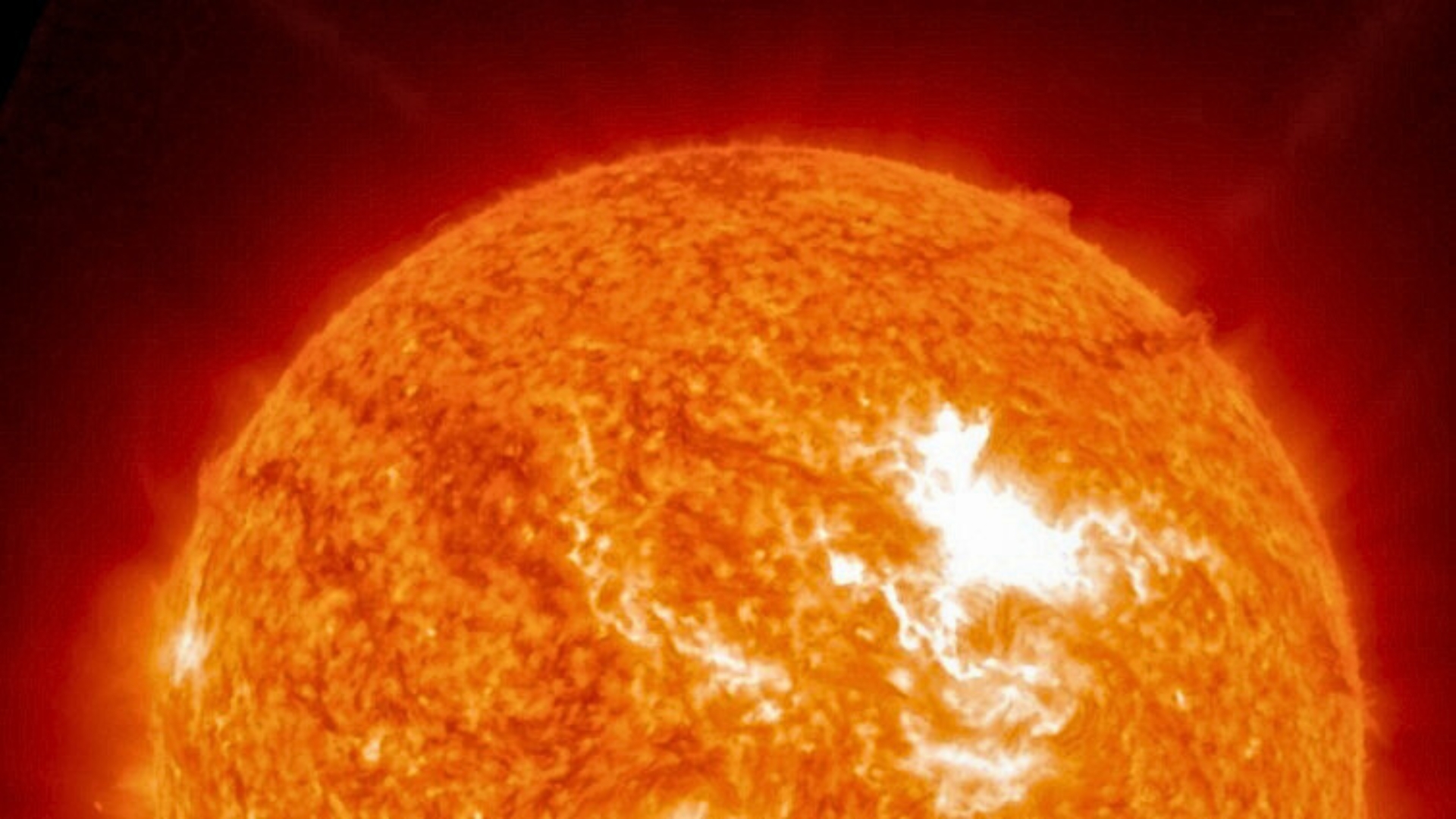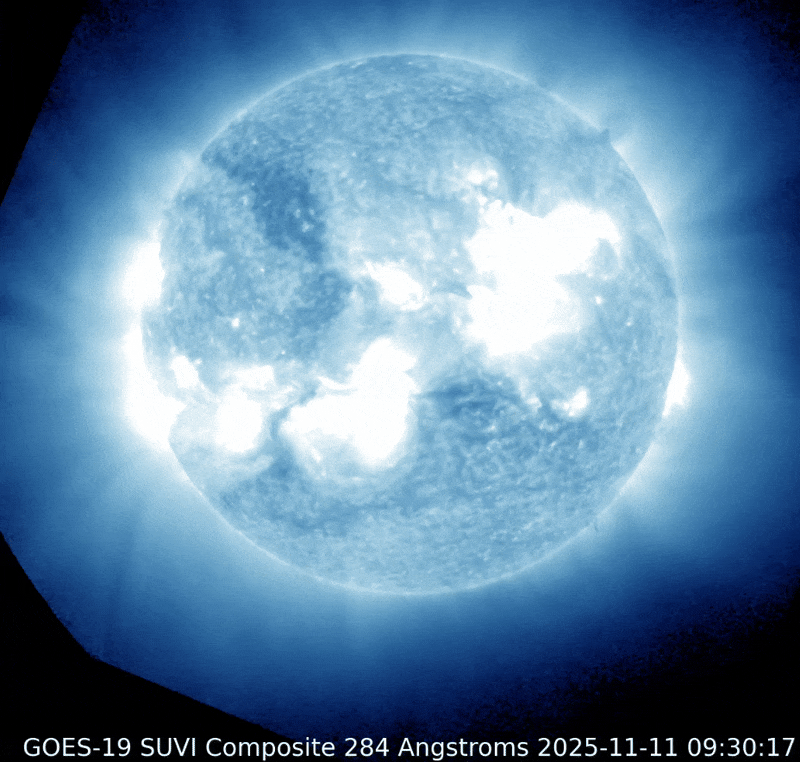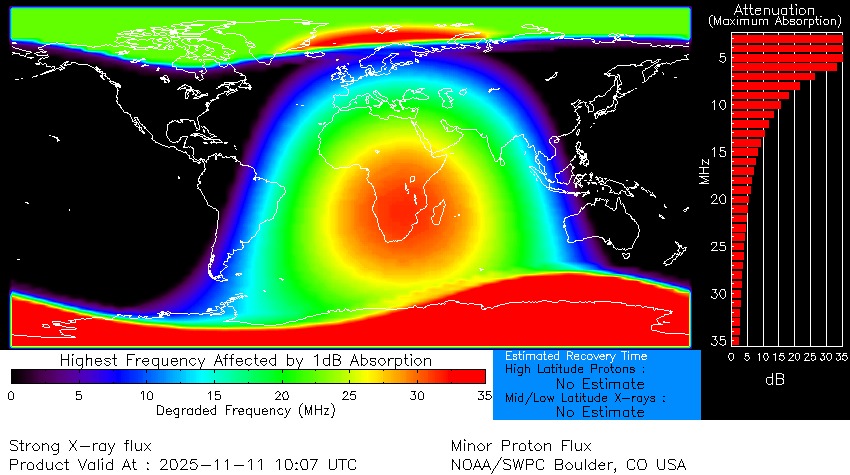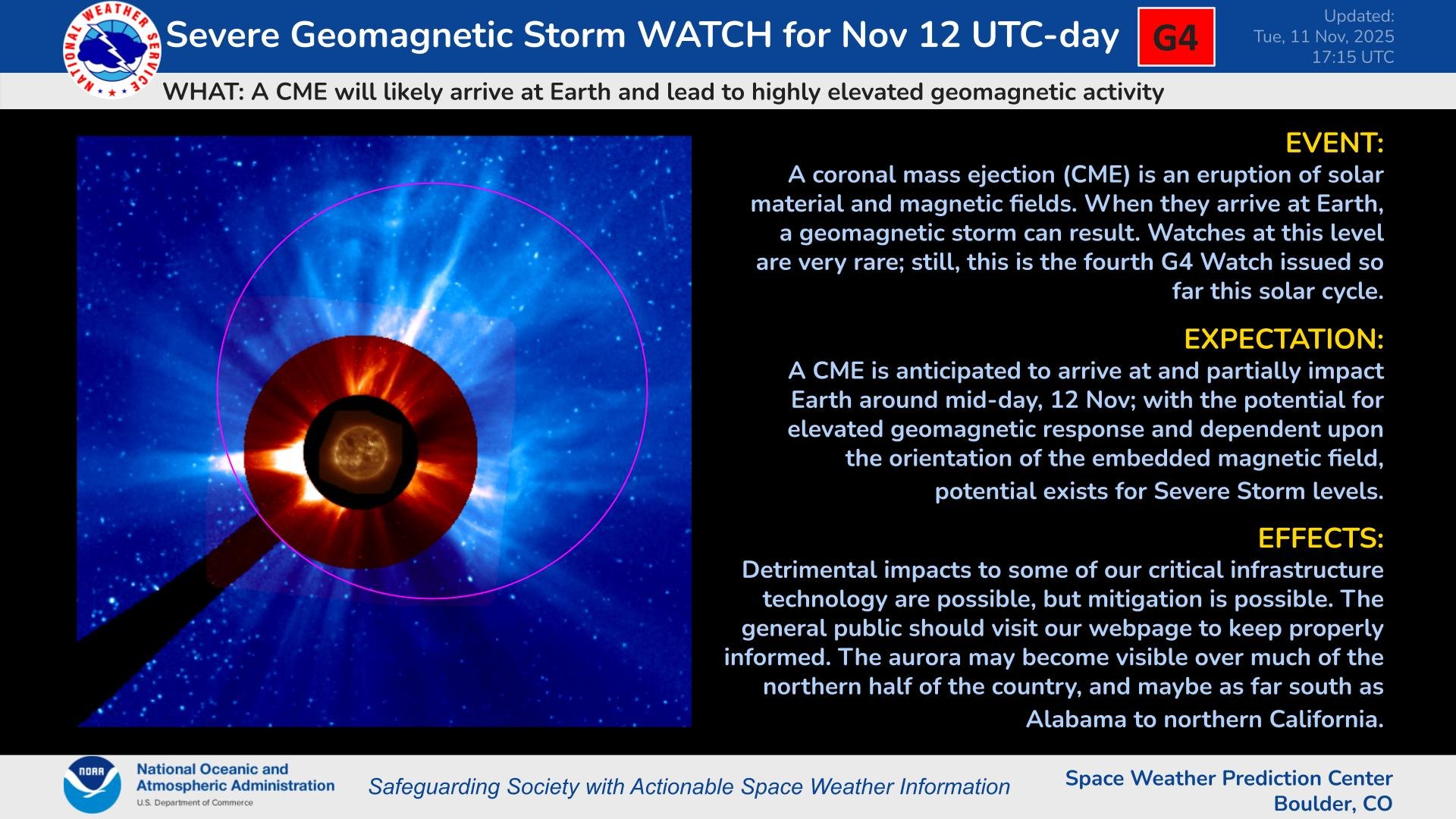Sun unleashes strongest solar flare of 2025, sparking radio blackouts across Africa and Europe
The X5.1-class eruption from sunspot AR4274 is this year's most powerful solar flare and Earth is in the firing line.

Editor's note: Wow, the northern lights put on a stunning display last night with auroras reported as far south as Mexico! See the best photos here in our wrap story. Conditions are also looking promising tonight as we await the CME impact from the X5.1 eruption. Check out our most recent article with the latest forecast and list of states that could see auroras tonight.
The sun erupted in spectacular fashion this morning (Nov. 11), unleashing a major X5.1-class solar flare, the strongest of 2025 so far and the most intense since October 2024.
The eruption peaked at 5 a.m. EST (1000 GMT) from sunspot AR4274, which has been bursting with activity in recent days. The blast triggered strong (R3-level) radio blackouts across Africa and Europe, disrupting high-frequency radio communications on the sunlit side of Earth.
This outburst is the latest in a series of intense flares from AR4274, which also produced an X1.7 flare on Nov. 9 and an X1.2 on Nov. 10. Those flares were accompanied by coronal mass ejections (CMEs) that could combine and impact Earth overnight tonight, possibly triggering strong (G3) geomagnetic storm conditions and widespread auroras, according to NOAA's Space Weather Prediction Center. The CME released today could also join the party as it speeds toward Earth at 4.4 million mph. NOAA predicts the CME could impact Earth around midday on Nov. 12. With this third CME added to the mix, it's possible that we could experience severe (G4) geomagnetic storm conditions.
NASA M2M SWO estimate the speed of the CME at 1856 km/s - a very fast CME! The animation of the CME in Cor2 data is absolutely spectacular. Big, fast CME. Bulk headed for us. I think it is safe to say this will be one of the most impressive near side CMEs of the cycle (fingers… https://t.co/nkNhspZo9i pic.twitter.com/9dRXkiSAPSNovember 11, 2025
Solar flares are ranked by strength in five classes, A, B, C, M and X, with each step representing a tenfold increase in energy output. X-class solar flares are the most powerful kind and the number following the X describes the flare's intensity. At X5.1, this latest eruption sits toward the top of the scale.
The eruption sent a surge of X-rays and extreme ultraviolet radiation toward Earth, ionizing the upper atmosphere and causing widespread radio signal degradation. Strong (R3) radio blackouts were recorded over Africa and Europe.
This active region has become one of the most prolific solar flare producers of Solar Cycle 25, marking a fiery peak in what's already been an extraordinary week for solar activity.
Breaking space news, the latest updates on rocket launches, skywatching events and more!
The CME released this morning during the X5.1 solar flare is forecast to reach Earth on Nov. 12. According to NOAA, the CME could trigger severe (G4) geomagnetic storm conditions on Nov. 12.

Daisy Dobrijevic joined Space.com in February 2022 having previously worked for our sister publication All About Space magazine as a staff writer. Before joining us, Daisy completed an editorial internship with the BBC Sky at Night Magazine and worked at the National Space Centre in Leicester, U.K., where she enjoyed communicating space science to the public. In 2021, Daisy completed a PhD in plant physiology and also holds a Master's in Environmental Science, she is currently based in Nottingham, U.K. Daisy is passionate about all things space, with a penchant for solar activity and space weather. She has a strong interest in astrotourism and loves nothing more than a good northern lights chase!
You must confirm your public display name before commenting
Please logout and then login again, you will then be prompted to enter your display name.




